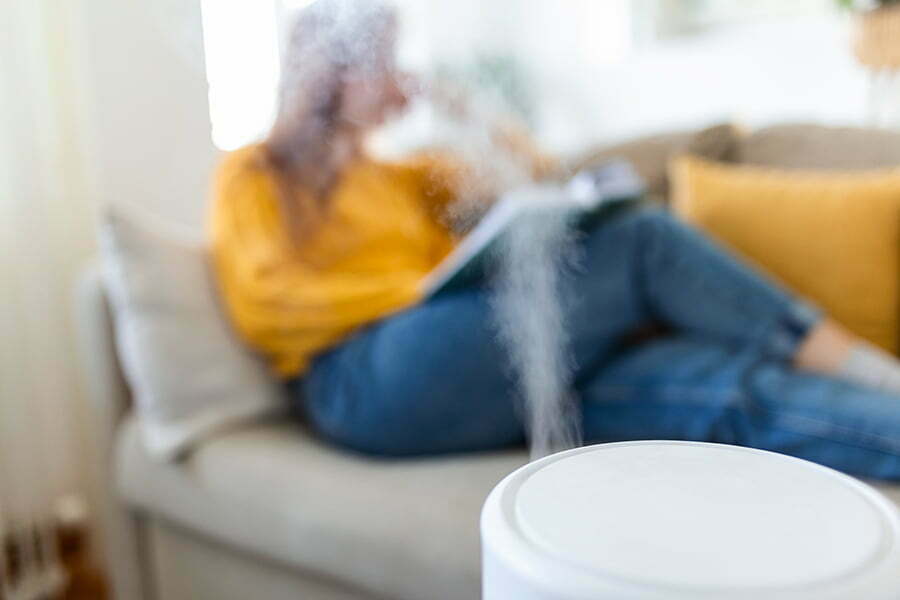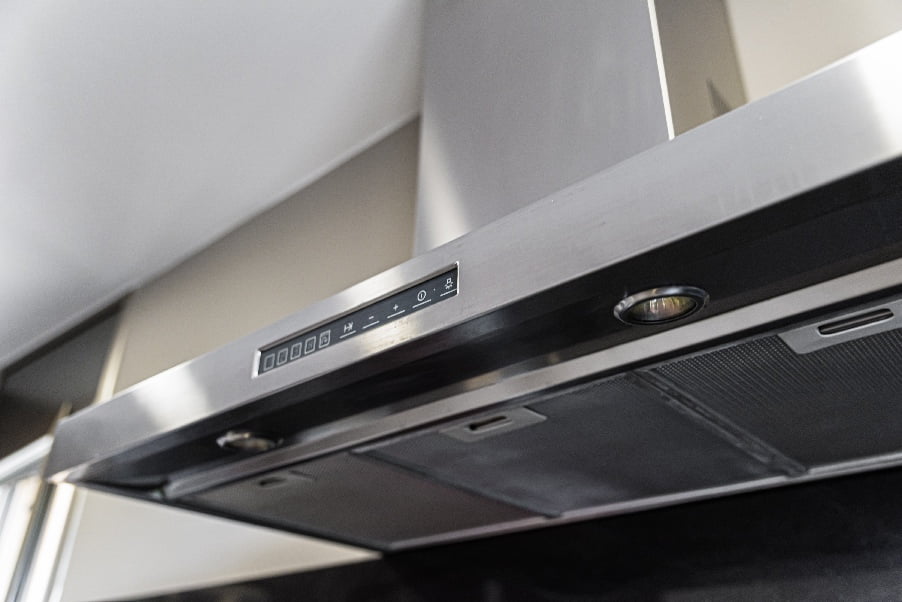Discover ten natural ways to purify the air in your home and breathe easy with these simple tips!
As I sat in my living room, admiring the beautiful view outside my window, I couldn’t help but notice the dust particles floating in the air. It was then that I realized how important it is to have clean indoor air.
The air we breathe inside our homes can be even more polluted than outdoor air, which is why it’s essential to take steps to improve its quality.
But don’t worry, you don’t need expensive gadgets or fancy equipment to clean your indoor air. In fact, there are many natural ways you can do so without breaking the bank! In this article, I’ll share with you 10 ideas on how to clean the air indoors naturally.
From adding some greenery to your space to using essential oils and even making your own DIY cleaning products – we’ve got you covered! So let’s dive in and learn how to breathe cleaner and fresher air inside our homes!
Use Indoor Plants

Not only do they add a touch of greenery to your space, but they also act as natural air purifiers.
As I looked around my living room, I realized that there were no plants in sight. So, I decided to head out and buy some new ones for my home.
After doing some research on which plants are best for cleaning the air indoors, I settled on a few varieties such as spider plant, peace lily and snake plant.
Not only did these plants look beautiful in my home but within days of adding them into my space; it felt fresher than ever before! The NASA Clean Air Study found that certain types of houseplants can remove up to 87% of toxins from the surrounding environment within just 24 hours!
So if you’re looking for an easy way to improve your indoor air quality naturally – consider adding some greenery into your space!
Invest in an Air Purifier

An air purifier can help remove pollutants such as dust, pet dander, and mold spores from the air. While there are many types of air purifiers available on the market, it’s important to choose one that uses a HEPA filter (High-Efficiency Particulate Air).
This type of filter can capture particles as small as 0.3 microns with 99.97% efficiency.
I remember when I first invested in an air purifier for my home; I was amazed at how much cleaner and fresher my indoor environment felt within just a few days! Not only did it reduce allergens and irritants in the atmosphere but also helped me breathe easier during allergy season.
However, keep in mind that while an excellent investment for your health and well-being, not all models are created equal – some may produce ozone or other harmful byproducts which could be counterproductive to your efforts towards improving indoor quality.
Therefore before purchasing one make sure you do thorough research on brands/models that have been tested independently or certified by reputable organizations like AHAM (Association of Home Appliance Manufacturers) or EPA (Environmental Protection Agency).
Investing in an efficient HEPA-filtered Air Purifier is definitely worth considering if you want cleaner indoor breathing space without compromising natural ways!
Open Windows and Doors for Ventilation

This allows fresh outdoor air to circulate inside, pushing out stale, polluted air.
I remember when I first started doing this in my own home – it was like a breath of fresh air! Not only did it help eliminate any lingering odors or stuffiness, but it also helped me feel more energized and focused throughout the day.
Of course, this may not be possible during extreme weather conditions or if you live in an area with high levels of pollution. In those cases, consider using an indoor air purifier instead.
But on days when the weather is mild and pleasant outside – throw open those windows and let nature do its thing! Your lungs (and your mood) will thank you for it.
Use Essential Oils or Natural Candles

Not only do they smell amazing, but they also have powerful properties that can help purify the air.
As I continued my quest for cleaner indoor air, I stumbled upon a variety of essential oils that are known for their cleansing properties. Tea tree oil, eucalyptus oil, and lavender oil are just a few examples of essential oils that can help kill airborne bacteria and viruses while leaving your home smelling fresh.
I also discovered natural candles made from beeswax or soy wax instead of paraffin wax. Paraffin wax releases harmful chemicals when burned which can contribute to poor indoor air quality.
Beeswax or soy candles not only burn cleaner but also release negative ions into the atmosphere which attach themselves to positively charged particles like dust and allergens making them heavier so they fall out of circulation in the room’s airflow.
By incorporating these simple changes into my daily routine – diffusing some tea tree oil in my living room during flu season or lighting up an all-natural candle after cooking dinner – I’ve noticed a significant improvement in both the scent and feel inside my home!
Clean Regularly With Baking Soda and Vinegar

These two household items are not only affordable but also readily available in most homes.
As I continued my research on natural air-cleaning methods, I stumbled upon this simple yet powerful solution. Baking soda has excellent odor-absorbing properties, while vinegar is a natural disinfectant that can kill bacteria and viruses.
To use this method, mix equal parts of baking soda and water to create a paste. Apply the paste onto surfaces such as countertops or floors where dust particles tend to accumulate.
Let it sit for 10-15 minutes before wiping it off with a damp cloth.
For tougher stains or areas with more significant buildup, you can add some white vinegar into the mix instead of water. The combination will create an effervescent reaction that helps break down dirt and grime effectively.
Regularly cleaning your home with baking soda and vinegar not only improves indoor air quality but also keeps your living space fresh-smelling without any harmful chemicals!
Keep Humidity Levels Under Control

High humidity can lead to the growth of mold and mildew, which can cause respiratory problems and allergies. On the other hand, low humidity levels can dry out your skin and nasal passages.
To keep your home’s humidity levels under control, you can use a dehumidifier or humidifier depending on what you need. If you live in a humid climate or have moisture issues in certain areas of your home like bathrooms or basements, a dehumidifier will help remove excess moisture from the air.
On the other hand, if you live in an arid climate where there isn’t enough moisture in the air causing dryness on skin and lips then using a humidifier will add some much-needed moisture back into it.
By keeping proper control over indoor relative-humidity (RH) level between 30-50%, we could prevent mold growth as well as reduce airborne allergens such as dust mites that thrive at higher RH values. In addition to controlling RH with appliances like dehumidifiers/humidifiers; opening windows for ventilation during non-polluted hours also helps maintain healthy airflow inside our homes naturally!
Avoid Harsh Chemicals Cleaners

However, these products can do more harm than good when it comes to indoor air quality. Many of them contain volatile organic compounds (VOCs) that can release harmful gases into the air we breathe.
As I learned more about VOCs and their impact on indoor air quality, I decided to switch out my chemical cleaners for natural alternatives. Not only are they better for my health and the environment, but they also help improve the overall cleanliness of my home.
One simple way you can avoid harsh chemicals is by making your own cleaning products using ingredients like vinegar, baking soda or lemon juice. These natural ingredients have powerful cleaning properties without any negative side effects on your health or indoor air quality.
By avoiding harsh chemicals in our homes as much as possible, we’re taking a step towards cleaner and fresher indoor air – something that’s essential not just for us but also for our loved ones who share this space with us!
Reduce Clutter to Prevent Dust Buildup

The more items we have lying around our homes, the more surfaces there are for dust and other pollutants to accumulate on. That’s why reducing clutter is an essential step towards cleaner indoor air.
Start by decluttering your home and getting rid of any unnecessary items that you no longer need or use. This will not only help improve your indoor air quality but also create a sense of calmness and organization in your space.
Once you’ve decluttered, make sure to keep surfaces clean by wiping them down regularly with a damp cloth or microfiber cloth. Avoid using harsh chemicals as they can release harmful fumes into the air.
By reducing clutter and keeping surfaces clean, you’ll be able to prevent dust buildup which can lead to respiratory issues such as allergies or asthma. So take some time today to declutter your home – both for a clearer mind and cleaner lungs!
Choose Furniture Made From Natural Materials

Many modern pieces of furniture are made from synthetic materials that release harmful chemicals into the air over time. These chemicals, known as volatile organic compounds (VOCs), can cause a range of health problems such as headaches and respiratory issues.
To avoid these harmful effects, it’s best to opt for furniture made from natural materials such as wood or bamboo. Not only do they look beautiful and add warmth to your space, but they also don’t emit any toxic fumes into your home’s atmosphere.
If you’re in need of new furniture or looking to replace some old pieces in your home, consider investing in high-quality items made from natural materials. You’ll not only be doing yourself a favor by breathing cleaner air but also supporting sustainable practices that benefit our planet!
Install a Range Hood Over Your Stove

Smoke, grease, and other particles released during cooking can quickly contaminate your indoor air quality. Installing a range hood over your stove can help to reduce these pollutants by capturing them before they spread throughout your home.
Range hoods work by pulling in the polluted air and venting it outside or filtering it through a charcoal filter before recirculating it back into the room. This helps to remove harmful particles such as carbon monoxide, nitrogen dioxide, and volatile organic compounds (VOCs) that are commonly found in cooking fumes.
Not only does installing a range hood improve indoor air quality but also protects you from potential health hazards associated with exposure to these pollutants over time. So if you’re looking for an effective way to keep your kitchen clean while improving overall indoor air quality – consider investing in a good-quality range hood!
Read Also
- None Found